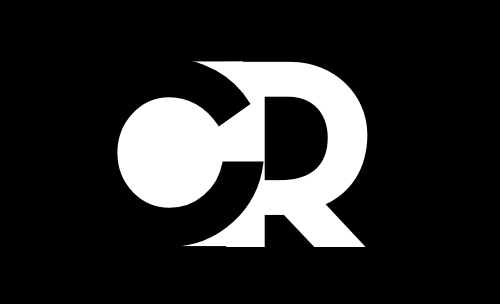Easiest freelance jobs for beginners to make $1K/month

Freelancing is a great way to earn extra income, especially for beginners looking to make around $1,000 per month without needing advanced skills. Whether you’re a student, stay-at-home parent, or just exploring side hustles, there are plenty of simple freelance jobs that require little to no experience. The key is to focus on tasks that are in demand, easy to learn, and can be done remotely with minimal setup.
In this guide, we’ll cover the easiest freelance jobs perfect for beginners, along with practical tips to get started and scale your earnings. From writing and virtual assistance to graphic design and data entry, these opportunities can help you hit your $1K/month goal quickly without overwhelming you. Let’s dive in!
Best Freelance Jobs for Beginners
If you’re new to freelancing and want to start earning $1,000/month or more, the key is to pick jobs that don’t require years of experience or complex skills. The best freelance gigs for beginners are those with low entry barriers, high demand, and flexible work hours. Here are some of the easiest yet profitable options:
1. Content Writing & Blogging
Businesses always need blog posts, product descriptions, and website content. If you can write clearly (even if you’re not a professional writer), you can land gigs on platforms like Upwork, Fiverr, or Medium. Beginners can start with simple articles, SEO content, or social media posts.
2. Virtual Assistant (VA)
Many entrepreneurs and small businesses need help with email management, scheduling, data entry, or customer support. No degree is required just basic organizational skills and reliability. Sites like Belay, Time Etc, and FreeUp hire beginner VAs.
3. Graphic Design (Simple Projects)
If you have a creative eye, you can design logos, social media graphics, or basic marketing materials using free tools like Canva. You don’t need to be an expert many clients just need quick, clean designs.
4. Data Entry & Transcription
These are zero-experience jobs where you input data or convert audio/video into text. Websites like Rev, Scribie, and Clickworker offer transcription gigs, while platforms like Amazon Mechanical Turk have data entry tasks.
5. Social Media Management
If you’re good at Instagram, Facebook, or TikTok, you can help small businesses schedule posts, engage with followers, and grow their audience. Tools like Buffer or Hootsuite make it easy to manage multiple accounts.
6. Online Tutoring or Teaching English
If you’re fluent in English (or any subject like math, science, or music), platforms like VIPKid, Preply, or Chegg pay well for tutoring. No teaching degree is needed just patience and good communication skills.
7. Affiliate Marketing (Beginner-Friendly)
You don’t need your own product just promote other companies’ products (Amazon, ClickBank, etc.) via blogs, YouTube, or social media and earn commissions. It takes time to build but can be passive income later.
8. Selling Digital Products
Create simple e-books, templates, or printables (like planners or resume templates) and sell them on Etsy, Gumroad, or Shopify. Once set up, they make money while you sleep.
Why These Jobs Work for Beginners
- No upfront costs (most just need a laptop & internet)
- Quick to learn (many have free online tutorials)
- Flexible hours (work as little or as much as you want)
- Scalable income (you can raise rates as you gain experience)
The best part? You can mix and match these gigs to hit your $1K/month goal faster. Next, we’ll look at where to find clients so you can start earning right away.
Where to Find Freelance Clients as a Beginner?
Landing your first clients is the biggest hurdle for new freelancers but the right platforms and strategies can help you start earning quickly. You don’t need a fancy portfolio or years of experience to get work; you just need to know where to look and how to present yourself. Here are the best places to find freelance gigs as a beginner:
1. Freelance Marketplaces (Best for Quick Gigs)
These platforms connect freelancers with clients worldwide. While competition can be high, they’re great for securing your first paid projects:
- Upwork – Best for writing, VA, design, and programming (start with small jobs to build reviews).
- Fiverr – Sell “gigs” (e.g., “$10 for a 500-word blog post”) ideal for writers, designers, and editors.
- PeoplePerHour – Good for web development, marketing, and creative work.
- Freelancer.com – Wide range of jobs, but watch out for low-ball offers.
Pro Tip: Optimize your profile with keywords (e.g., “blog writer for small businesses”) and start with lower rates to gain testimonials.
2. Job Boards (Curated Opportunities)
Some websites specialize in remote and freelance jobs:
- ProBlogger – Writing and editing jobs.
- We Work Remotely – High-quality remote gigs in design, marketing, and more.
- Remote.co – Filter by entry-level roles.
- AngelList – Startup jobs (some offer freelance or part-time work).
3. Social Media (Free & Effective)
Many clients post gigs directly on:
- LinkedIn – Update your headline (e.g., “Freelance Writer for Tech Startups”) and engage with posts to get noticed.
- Facebook Groups – Join groups like “Freelance Writers’ Den” or “Virtual Assistants for Hire.”
- Twitter/X – Follow hashtags like #FreelanceJobs or #HiringWriters.
- Reddit – Check r/forhire and niche subreddits (e.g., r/HireAWriter).
4. Cold Pitching (Direct Outreach)
If you want to skip competition, email businesses directly:
- Find small companies with outdated blogs or weak social media.
- Send a short, friendly pitch:*”Hi [Name], I noticed [Company] hasn’t posted on Instagram in a month I’d love to help grow your audience with 3 weekly posts for $200/month. Let me know if you’re interested!”*
5. Local Businesses (Underrated Goldmine)
Many small businesses (coffee shops, gyms, salons) need help with:
- Social media management
- Website updates (via WordPress/Wix)
- Flyer or menu design
Offer your services in person or via email they often prefer hiring locally.
6. Networking (Long-Term Growth)
Tell everyone you’re freelancing:
- Friends/family (e.g., “I design logos know anyone who needs one?”)
- Alumni networks or Slack communities.
- Online forums (Indie Hackers, Discord groups).
Key Takeaways
- Start with marketplaces to build credibility.
- Combine job boards + social media for more opportunities.
- Pitch directly to stand out many clients don’t post jobs publicly.
- Don’t undervalue yourself even beginners deserve fair pay.
Once you land clients, the next step is setting your rates which we’ll cover next to ensure you hit that $1K/month goal without burning out.
How to Price Your Freelance Services?

Pricing is where most beginners struggle – charge too little and you’ll burn out, charge too much and you might scare off early clients. Here’s how to find that sweet spot where you’re earning $1K/month without working 80-hour weeks:
1. Pricing Models: Which One Works Best?
- Hourly Rates (Best for beginners)
- $10-$25/hour is realistic for entry-level skills
- Example: 10 hours/week at $15/hour = $600/month
- Per-Project Pricing (Better as you gain experience)
- Charge $50-$200 for a blog post, $100-$300 for a logo
- Example: Five $200 projects/month = $1,000
- Retainers (Ideal for steady income)
- $300-$500/month for social media management
- Example: Two $500 retainer clients = $1K
2. How to Determine Your Rate
- Calculate your baseline:
- What monthly income do you need? ($1,000)
- How many billable hours can you work? (About 25-30/week max)
- Research your niche:
- Check what others charge on Upwork/Fiverr
- Remember: Top freelancers charge 3-5x more than beginners
- Start low, but not desperate:
- First 5-10 projects can be 20-30% below market rate
- Never work for free (except maybe one sample piece)
3. Common Pricing Mistakes to Avoid
🚫 Charging by the word (unless you’re an established writer)
🚫 Not accounting for revisions (build 1-2 free revisions into your price)
🚫 Forgetting about taxes (set aside 20-30% of earnings)
🚫 Undercutting just to get clients (attracts worst clients)
4. When and How to Raise Your Rates
- After completing 10-15 projects successfully
- When you’re turning away work
- For existing clients: “Starting next month, my rate will increase to…”
- For new clients: Just update your profiles/website
5. Sample Pricing for Beginner Freelancers
| Service | Beginner Rate | Monthly Goal (5-10 clients) |
|---|---|---|
| Blog Writing (500 words) | $50-$75 | 15 articles = $750-$1,125 |
| Social Media Posts (10/month) | $150-$300 | 4 clients = $600-$1,200 |
| Basic Logo Design | $80-$150 | 7 logos = $560-$1,050 |
| Data Entry (per hour) | $12-$18 | 55 hours = $660-$990 |
Pro Tip: Always track your time (try Toggl or Clockify) – you’ll quickly see which services earn you the most per hour.
As you gain confidence, you’ll naturally move from “How much can I charge?” to “How much should I charge?” The key is to view your first 3-6 months as paid training – you’re getting experience while getting paid, even if it’s not your ideal rate yet.
Essential Tools Every Beginner Freelancer Needs
When you’re just starting out, the right tools can mean the difference between struggling to make $1K/month and hitting that goal with confidence. Here’s your no-fluff guide to the must-have (and mostly free) tools that will make your freelance business run smoothly:
1. Productivity & Organization
- Trello or Notion (Free plans available)
- Organize projects with Kanban boards
- Track client work from “To-Do” to “Paid”
- Google Calendar (Free)
- Schedule client calls and deadlines
- Set reminders for follow-ups
- Clockify (Free time tracker)
- Essential if charging hourly
- Helps identify your most profitable services
2. Communication & Professionalism
- Google Workspace (Free or $6/month)
- Professional email (@yourdomain.com)
- Docs/Sheets for collaborative work
- Zoom (Free plan available)
- Client meetings and consultations
- Calendly (Free for basic scheduling)
- Let clients book calls automatically
- No more back-and-forth emails
3. Financial Management
- Wave Apps (100% free)
- Invoicing and accounting
- Tracks income/expenses for tax time
- PayPal & Stripe
- Accept payments internationally
- PayPal has buyer/seller protection
- Separate Bank Account
- Keep business/personal finances separate
- Most banks offer free business checking
4. Service-Specific Tools
For Writers:
- Grammarly (Free version works great)
- Hemingway App (Improves readability)
- Google Docs (Real-time collaboration)
For Designers:
- Canva (Free plan available)
- Figma (Free for beginners)
- Unsplash/Pexels (Free stock photos)
For Virtual Assistants:
- Loom (Free screen recordings)
- LastPass (Free password manager)
- Slack (Team communication)
For Social Media Managers:
- Buffer (Free for 3 channels)
- CapCut (Free video editing)
- Preview App (Instagram planning)
5. Portfolio & Online Presence
- Carrd ($9/year)
- Simple one-page portfolio site
- Canva Portfolio (Free)
- Visually showcase your work
- LinkedIn Profile
- Essential for professional credibility
Pro Tip: Don’t go tool-crazy. Start with 3-4 essentials, then add others as specific needs arise. The goal is to work smarter, not complicate your workflow.
Free Alternatives to Paid Tools
| Paid Tool | Free Alternative |
|---|---|
| Photoshop | Photopea |
| Adobe Premiere | DaVinci Resolve |
| Microsoft Office | LibreOffice |
| Dropbox Pro | Google Drive |
Remember: Tools don’t make you money – clients do. These exist to save you time and present yourself professionally. Many successful freelancers reach $1K/month using nothing fancier than Google Docs and a PayPal account.
How to Build Your Freelance Portfolio With No Experience?
You don’t need paid clients to create a portfolio that lands you work. Many successful freelancers started by showcasing spec work (sample projects) that demonstrated their skills. Here’s how to build a portfolio that gets you hired even if you’ve never had a client before.
1. Create Sample Projects That Look Real
If you don’t have client work yet, make your own. Choose projects that align with the jobs you want:
- Writers: Write 2-3 blog posts (e.g., “5 Productivity Tips for Remote Workers”)
- Designers: Mock up logos or social media posts for fake brands
- Virtual Assistants: Show sample spreadsheets or email templates
- Social Media Managers: Create a content calendar for an imaginary business
Pro Tip: Use real-world examples find a local business with a weak online presence and redesign their logo or rewrite their website copy (then show them your work they might hire you!).
2. Use Free Platforms to Showcase Your Work
You don’t need a fancy website yet. Start with:
- Google Drive Folder (Share a link with clients)
- Canva Portfolio (Great for visual work)
- Carrd or JournoPortfolio (Simple, one-page sites)
- LinkedIn Articles (Publish samples directly on your profile)
Example: A writer could create a Google Doc with 3 writing samples and share the link in proposals.
3. Volunteer (Strategically) for Testimonials
Offer free or discounted work to:
- Nonprofits (They often need help and will give testimonials)
- Small Businesses (Offer a free sample in exchange for a review)
- Friends & Family (Design a logo for a friend’s side hustle)
Key: Treat these like real projects deliver quality work and ask for a LinkedIn recommendation or short testimonial.
4. Fake It (Just a Little) Without Lying
- If you helped a friend with their resume, call it “Freelance Resume Consultant”
- If you designed flyers for a school event, list it as “Graphic Design for Local Organization”
- If you wrote blog posts for free, say “Guest Contributor” instead of “Unpaid”
Important: Never claim paid experience you don’t have but you can frame unpaid work professionally.
5. Make Your Portfolio Client-Focused
Instead of just displaying work, explain how you solved a problem. For example:
✅ Good: “Wrote a 1,500-word SEO blog post that ranked #1 on Google for ‘best running shoes’”
❌ Bad: “Blog post about running shoes”
Bonus: Include a short “About Me” section explaining why you’re passionate about the work.
6. Keep It Simple (3-5 Strong Pieces Max)
Clients skim—so:
✔ Pick your best 3-5 samples
✔ Organize by skill (e.g., “Blog Writing,” “Social Media Graphics”)
✔ Update it every 2-3 months as you get better work
7. Where to Share Your Portfolio
- Freelance platforms (Upwork, Fiverr)
- Cold emails (“Here’s a sample of what I can do for you…”)
- Social media (LinkedIn, Twitter, Instagram depending on your niche)
Key Takeaway
Your portfolio isn’t about proving you’ve been paid before it’s about showing what you can do. Start with spec work, refine it over time, and soon, you’ll replace those samples with real client projects.
Final Thoughts
Making $1,000/month as a beginner freelancer isn’t about having years of experience it’s about taking action with the right opportunities, tools, and mindset. You now have everything you need to start:
✅ A list of beginner-friendly jobs that pay well
✅ Where to find clients (even with no experience)
✅ How to price your work without underselling yourself
✅ Essential tools to work efficiently
✅ A portfolio strategy that works without prior clients
The only thing left? Getting your first gig. Pick one skill, create a sample, and start pitching today. Your first $1K month is closer than you think you just have to begin.
Now go make it happen! 🚀






